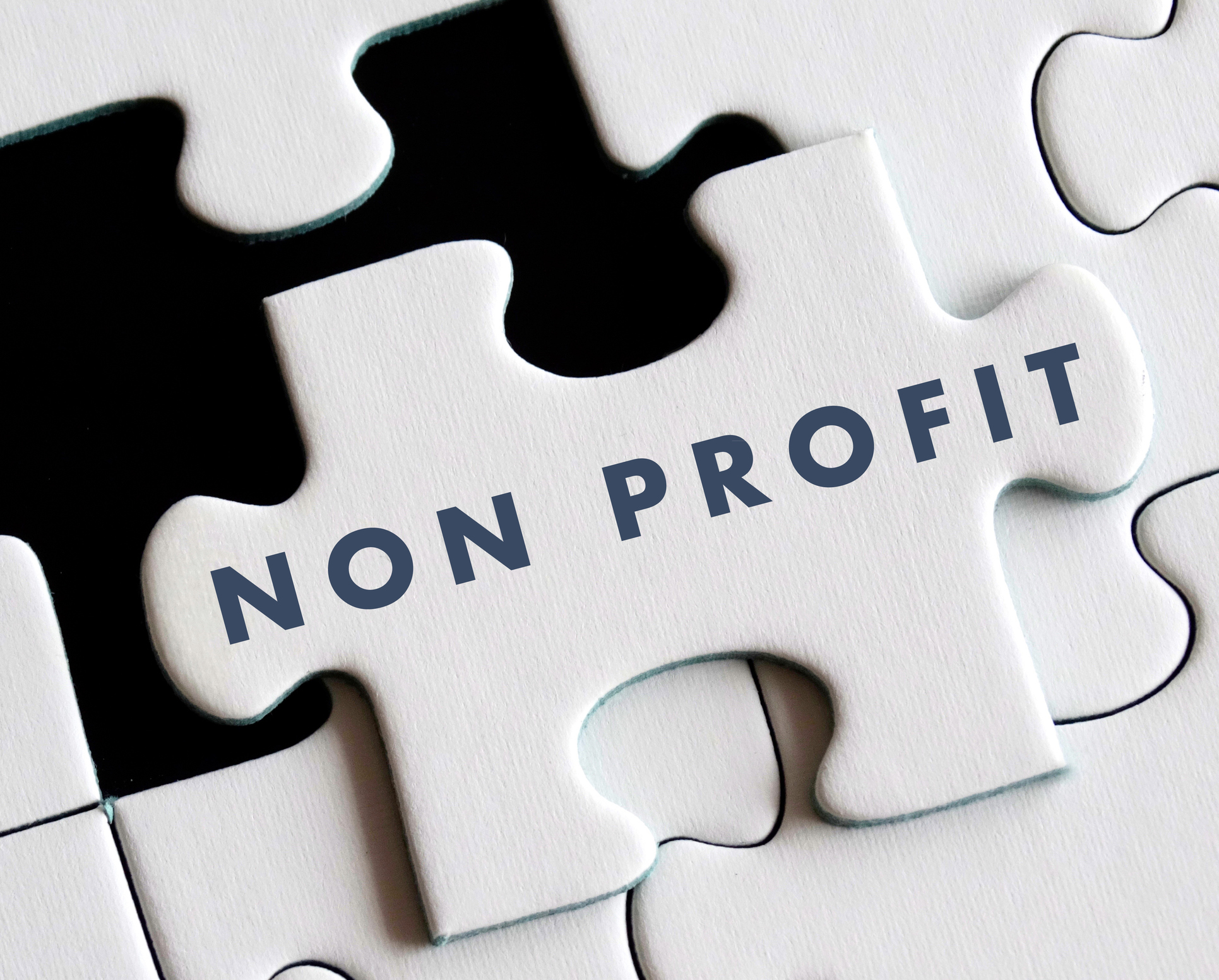Nonprofit Firm: Custom-made Solutions for Sustainable Advancement and Impact
Nonprofit Firm: Custom-made Solutions for Sustainable Advancement and Impact
Blog Article
Understanding the Crucial Duty and Effect of a Nonprofit Company in Community Development and Support Services
Not-for-profit agencies serve as crucial stimulants for community growth and assistance solutions, attending to the multifaceted requirements of marginalized populations. The landscape of not-for-profit job is fraught with obstacles and opportunities that can substantially affect their efficiency.
Meaning of Nonprofit Agencies
Nonprofit agencies are often specified as organizations that run mostly for functions aside from creating earnings for owners or investors. These entities concentrate on dealing with social, cultural, ecological, or neighborhood needs, and they reinvest any kind of excess earnings back right into their mission-driven activities. Nonprofits might take various types, including charitable organizations, structures, advocacy groups, and social enterprises, each with special frameworks and functional structures.
The guiding principle of a not-for-profit company is its dedication to offering the general public interest. This dedication often materializes in a broad range of solutions, from education and healthcare to real estate and ecological conservation. Nonprofits normally count on diverse funding sources, consisting of contributions, grants, and subscription charges, to support their efforts.
In order to maintain transparency and liability, nonprofit companies are required to follow details laws and reporting criteria. This oversight is vital for building trust fund with stakeholders, including contributors, volunteers, and the communities they offer. By focusing on social impact over financial gain, nonprofit firms play an essential duty in promoting community growth and addressing pressing social obstacles, thereby contributing substantially to the general health of society.
Key Features in Community Development
Area growth prospers on the energetic engagement of numerous organizations, with not-for-profit agencies playing a critical function in fostering sustainable growth and enhancement. These firms offer as crucial facilitators, bridging gaps between community demands and offered sources. One of their crucial functions is to identify and evaluate regional requirements with area engagement, guaranteeing that advancement efforts matter and customized to the certain context.

Campaigning for is another important function of nonprofits, as they represent the interests of the community in policy conversations, promoting equitable access to services and resources. By increasing awareness on important problems, they contribute to informed decision-making at different levels. Ultimately, the multifaceted functions of not-for-profit firms in neighborhood growth not just promote prompt renovations but likewise prepared for long-term sustainability and strength within neighborhoods.

Influence On Susceptible Populations
How do not-for-profit companies specifically address the requirements of at risk populaces within community advancement efforts? Nonprofit firms play an important role in determining and resolving the one-of-a-kind obstacles dealt with by marginalized groups, consisting of low-income families, the elderly, and individuals with impairments. By tailoring their programs and solutions, these companies can supply crucial assistance that fosters strength and self-sufficiency.
For example, lots of nonprofits offer accessibility to food help programs, real estate support, and healthcare solutions that directly minimize the problems encountered by at risk populations. Additionally, they typically function as advocates, enhancing the voices of those that might otherwise go unheard read this post here in policy discussions. Via neighborhood outreach and education and learning, nonprofits equip individuals with the understanding and resources required to navigate intricate systems and safeguard their civil liberties.
Furthermore, nonprofits take part in capacity-building initiatives that improve the skills and chances of prone individuals, thus promoting social equity. Their dedication to inclusivity makes sure that neighborhood development efforts are receptive and thorough to the diverse demands of all homeowners. In summary, not-for-profit agencies are important in alleviating the challenges dealt with by susceptible populations, fostering neighborhood communication, and driving lasting development.
.svg)
Partnership With City Government
While many challenges in neighborhood advancement need concerted initiatives, partnership in between nonprofit firms and city governments is important for producing reliable services. This collaboration permits for the pooling of resources, proficiency, and networks, which can considerably boost service delivery and neighborhood engagement. Not-for-profit agencies often have firsthand knowledge of the demands and aspirations of regional populations, allowing them to inform government plans and programs efficiently.
Moreover, city governments can offer vital support in terms of financing, facilities, and governing frameworks that promote the work of nonprofits. This harmony not only promotes a more extensive method to attending to area issues however also ensures that initiatives are based in the realities of the populaces they intend to offer.
Joint efforts, such as area health programs, instructional workshops, and housing tasks, highlight the substantial advantages of this cooperation. By aligning their methods and objectives, regional governments and not-for-profit firms can create sustainable influences that boost the lifestyle for citizens.
Difficulties and Opportunities Ahead
The collaboration between regional governments and not-for-profit companies, though helpful, is not without its obstacles. One considerable hurdle is the frequently restricted funding offered for nonprofit organizations, which can hinder their capability to carry out detailed neighborhood programs. This monetary restriction can cause competition for sources, producing stress among numerous firms aiming to accomplish comparable objectives. Furthermore, differing priorities between nonprofits and federal government entities can lead to misaligned goals, making complex collaborative initiatives.
Nevertheless, these obstacles also existing special opportunities. Nonprofits can leverage their grassroots links to recognize neighborhood needs that may be ignored by government firms, guaranteeing that services are tailored to the neighborhood population. By promoting innovative collaborations and exploring different financing resources, such as social enterprises or grant possibilities, nonprofits can enhance their sustainability and impact.
Moreover, the expanding recognition of the value of collective effect urges an extra integrated method to neighborhood advancement. This produces a fertile ground for nonprofits to support for policy changes that resolve systemic issues. By welcoming both chances and challenges, nonprofit firms can continue to play an important role in advancing community advancement and websites support services, inevitably benefiting the areas they serve.
Verdict
In summary, not-for-profit firms offer as important drivers for neighborhood advancement and assistance solutions, successfully resolving the needs of at risk populaces. Regardless of facing obstacles, the capacity for growth and innovation within the not-for-profit sector remains significant.
Nonprofit firms serve as vital drivers for community development and support services, addressing the multifaceted requirements of marginalized populations. Ultimately, the diverse duties of not-for-profit agencies in community development not just promote prompt enhancements but likewise lay the foundation for long-lasting sustainability and strength go to website within areas.
While many obstacles in community advancement need collective efforts, collaboration between not-for-profit firms and regional governments is essential for producing efficient options. By accepting both difficulties and opportunities, nonprofit firms can continue to play a crucial role in advancing neighborhood advancement and support services, inevitably benefiting the areas they serve.
In summary, nonprofit firms offer as important catalysts for neighborhood growth and support solutions, properly dealing with the demands of prone populaces. - nonprofit agency
Report this page